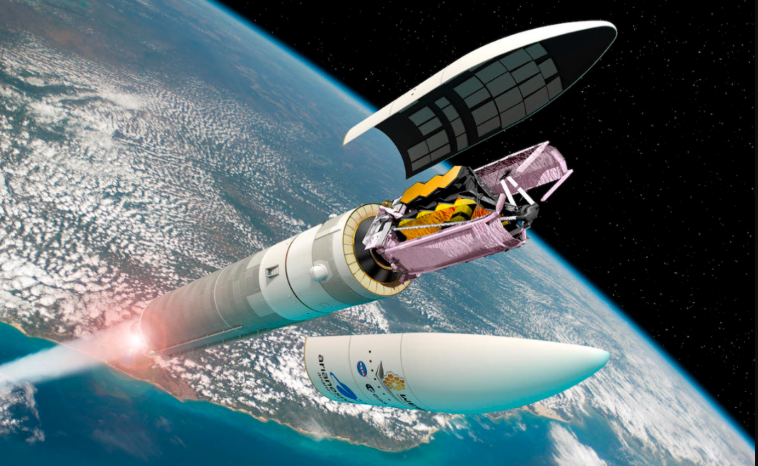Europe remains without space access until 2024

The powerful, large Ariane 5 rocket of the European Space Agency was launched on its one hundred and seventeenth mission in the first seconds after midnight, July 6. This is the final launch of the infamous, giant European rocket.
French military satellite (Syracuse 4B) and a German experimental telecommunications satellite (Heinrich-Hertz) were successfully launched into Earth orbit. At the time of writing, they are successfully occupying their planned, permanent positions in geostationary orbit with their own rocket propulsion.
Ariane 5 was conceived back in the eighties of the last century as a European hope on the way to space.
In the summer of 1996, its first launch resulted in a failure, nothing unusual for a complex missile system just beginning its decades-long operational life.
The second launch was not completely successful either. Since then, things have settled down and Ariane 5 has fully justified its existence. In total, one hundred and seventeen launches were made with various versions of this rocket.
Of these, over the past twenty-seven years there have been one hundred and twelve fully successful, three partially successful and two unsuccessful launches. The success rate of the Ariane 5 rocket is an excellent 96%!
A total of two hundred and thirty-nine satellites were launched with it, both in Earth orbit and interplanetary missions.

How reliable and respected the Ariane 5 rocket is perhaps best expressed by the fact that it was entrusted with the launch of the James Webb Space Telescope (December 25, 2021), a spacecraft worth ten billion USD, the most expensive spacecraft ever launched in the history of our civilization!
Ariane 5 is the untested carrier rocket of the European Hermes rocket. In the mid-1980s and early 1990s, ESA planned the construction of two small Hermes-type rocket planes for flights with a three-man crew into Earth’s orbit. The Hermes project was canceled in the mid-nineties, and Ariane 5 lived for almost three decades.
The successor to the reliable Ariane 5, Ariane 6 was designed in 2010. During 2015 and beyond, production activities were started so that the first flight would follow in 2020. The plans were revised over time due to technical reasons and the first flight was scheduled for the second half of 2023.
Today it is clear that nothing will happen from the inaugural flight of the successor to Ariane 5 until the end of 2024 at the earliest, most likely not even a year later. It is not known how this will affect the launch schedule, given that as many as thirteen launches were planned until 2025.
Thanks to the cancellation of cooperation with Roscosmos, Europe was left without a Soyuz carrier rocket, and the problems with the semi-domiciled small VEGA rocket are not likely to be solved in the near future.
At the end of the beautiful story of the Ariane 5 title, Europe remains for a few years without its own access to space.
Want to read more about the universe? Visit our blog!

